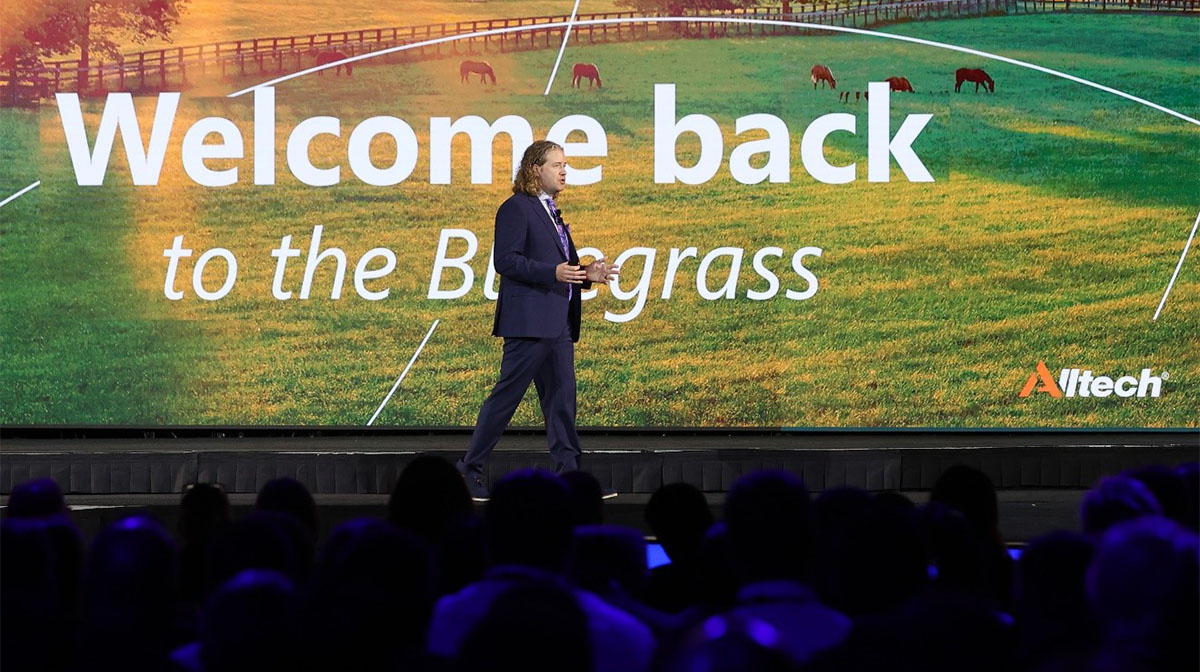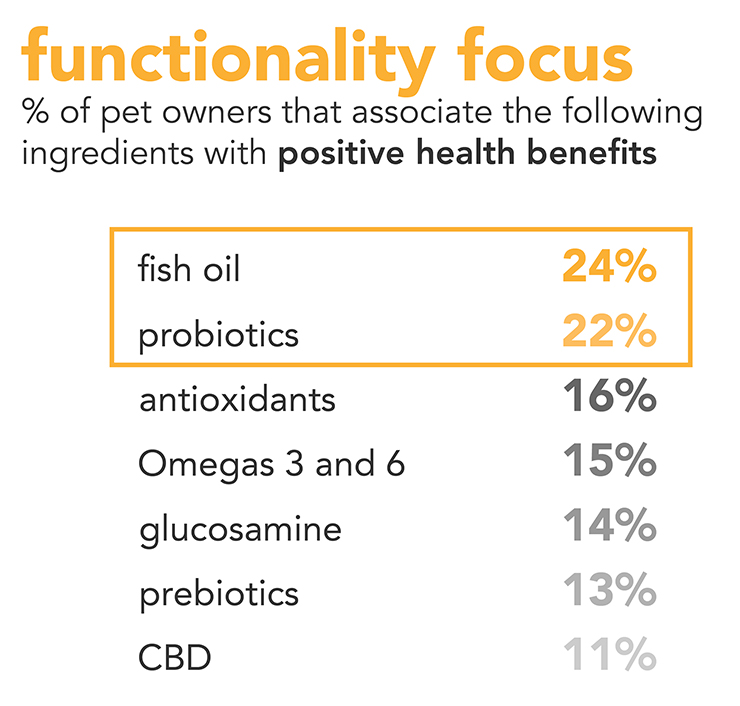LEXINGTON, KY. — After two years gone fully virtual, nearly 2,000 industry members across the agriculture industry convened face-to-face for the 28th annual Alltech ONE Conference, held in Lexington from May 21 to 24. The company offered both in-person and virtual opportunities, the latter of which were attended by more than 5,000 participants.
“It’s been almost 1,100 days since we were last together and certainly, we know a tremendous amount has changed — from social turmoil to a global pandemic and beyond,” said Mark Lyons, Ph.D., president and chief executive officer of Alltech, during his welcoming statements from the ONE Mainstage. “What is this all telling us? What can we step back and think about in terms of how we progress forward?”
A common theme throughout the ONE Conference was creating a Planet of Plenty™, an initiative by the company to partner with likeminded people and groups to advance economic, environmental and social sustainability on a global scale through science-based solutions.
“Reducing is not enough; we must do something different,” Lyons said. “Our belief is that agriculture has the greatest potential to positively influence the future of our planet, to provide nutrition for all and to help rural communities thrive and replenish our planet’s resources.”
 Mark Lyons, Ph.D., president and CEO of Alltech, opened the Alltech ONE Conference to both live and virtual global audiences on May 23. (Photo courtesy of Alltech)
Mark Lyons, Ph.D., president and CEO of Alltech, opened the Alltech ONE Conference to both live and virtual global audiences on May 23. (Photo courtesy of Alltech)
Alltech sponsored networking events, tours, concerts, excursions and talks on Saturday, May 21, and Sunday, May 22, followed by two full days of programming. On Monday, May 23, and Tuesday, May 24, sessions were segmented into a variety of different focus tracks, one of which was dedicated to pet health and nutrition.
Leaders from Alltech’s companion animal business were joined on the pet track stage by several industry experts who discussed supplement trends and humanization, promoting cognitive health through nutrition, and the importance of trace minerals in senior pet health.
Good for people, good for pets
First up on the pet stage was Nicole Hill, executive director of strategy at MarketPlace, who discussed the crossover between human supplement and pet supplement trends.
“So much of what we see in the pet space today is really that drive toward longevity, and not just length of life but quality of life,” Hill said.
Hill shared data from a survey of 506 US pet owners, of which 46% of respondents said they administer supplements to their pets at least once per week. According to the data, pet owners who take supplements for themselves are 12% more likely to administer supplements to their pets as well, compared to pet owners who do not take supplements.
Overall, 43% of pet owners surveyed are seeking natural products for both themselves and their pets, 35% associate quality with a “made in the US” product claim, and 54% say it’s important that pet nutrition products are made with human-grade ingredients.
The pet supplement space is proliferating to include a wide breadth of functional health claims, whether they are addressing a specific area of concern or providing overarching health and wellness support, similarly to a multivitamin. Hill acknowledged that while joint health and skin and coat health are two mainstays in the pet supplement category, she is noticing other solution-based categories coming into focus through the eyes of consumers – namely calming and anti-anxiety, immunity, and gut health.
 Source: Marketplace
Source: Marketplace
“What we're seeing is that while joint health and skin and coat health have long been volume drivers for the pet category in terms of functional benefits people seek,” she said. “I would also venture to say they are the two most visibly obvious benefits that you can see if they're working, which is critically important to any sustaining use of a supplement.”
According to the data, 45% of pet owners who give their pets supplements on a weekly basis are seeking out specific ingredients, while 37% are seeking branded ingredients. She noted if brands are able to include an ingredient that has a science-based, credible and reliable source of efficacy attached to it, that product will be elevated in the eyes of the consumer in terms of quality.
With a variety of supplement formats available on today’s market, Hill shared the majority of pet owners (38%) prefer soft chews as vehicles for supplementation — dubbing this format “the ‘gummy’ of the pet space” — while 22% prefer treats, another 22% prefer a food topper, and 19% prefer to purchase a kibble pet food fortified with supplements.
Brain power
Joli Jarboe, DVM, DACVIM, senior veterinary neurologist and neurosurgeon at Bush Veterinary Neurology Service in Leesburg, Va., took the stage next to discuss how nutrition can tie into cognitive health and development. Brain health starts with gestation in utero and continues through every stage of a companion animal’s life.
The majority of brain development happens during the first year of life, including the development of enhanced memory and learning. For example, Jarboe shared, if a kitten’s diet is low in Omega 3 and Omega 6 fatty acids, research has proven that they will show reduced electrical brain activity later on.
As dogs or cats continue to grow through the middle stages of life, antioxidant support and immune support must be delivered through nutrition to slow oxidation, which leads to cellular death and dysfunction.
“We are taught to treat diseases. I think we got it backwards – I think we need to treat health,” said Joli Jarboe, DVM, DACVIM, senior veterinary neurologist and neurosurgeon at Bush Veterinary Neurology Service.
In the “twilight years,” or as a pet becomes geriatric, this fight against oxidation becomes even more critical. Slowing down cellular death and protecting the energy function of cells can help reduce cognitive dysfunction, Jarboe noted.
Among a long list of essential nutrients, Jarboe pointed to two vitamins, a handful of essential fatty acids and a cast of supporting nutrients that are vital for cognitive development and maintenance. Vitamin E, for example, is a fat-soluble vitamin and an antioxidant that can enhance the effects of fatty acids, support eyesight, mitochondrial function, immune function and nerve transmission.
“Some of the good sources of vitamin E would be green, leafy vegetables, [as well as] plant oils like safflower, sunflower and soybean oil, eggs, salmon, avocado and even trout,” Jarboe shared.
B vitamins, such as thiamine (B1), riboflavin (B2), niacin (B3), pantothenic acid (B5) and a suite of others, can also affect cognition both directly and indirectly.
Omega 3 fatty acids provide docosahexaenoic acid (DHA), which is vital for brain and vision development and can act as a “neuroprotective,” Jarboe stated. They also deliver eicosapentaenoic acid (EPA), which supports cellular immune functions and can reduce inflammation. The important thing to note with Omega 3 and 6 fatty acids is that they cannot be produced by a dog or cat internally – they must be supplemented in the diet.
Supporting nutrients for cognitive pet health include taurine, vitamin A, B12, choline and L-carnitine. It’s also important to note that what happens in the gut can affect an animal’s cognitive health. For example, stress can have an impact on gut health, Jarboe said, which can result in changes to behavior and immune system functions that could be detrimental for the brain.
“The gut-brain axis is critical, and we're finding out that again, this bi-directional communication highway between the GI tract and the brain is critical for most of the functions in our body,” Jarboe said.
The golden years
According to market research firm Packaged Facts, more than half of dog-owning households in the United States currently have a dog that is 7 years or older, and the same can be said for cat-owning households. As the senior pet population rises, the question arises: how can nutrition play a more active role in longevity?
Laurentia van Rensburg, technical mineral manager at Alltech, explained the key roles minerals can play in supporting longevity through optimized gut health and the prevention of oxidation.
“With these physical changes that we see with old age, one of the big ones is that we actually see a weakening of the immune system,” van Rensburg said. “…For nutritionists, for veterinarians and for pet owners alike, anything that you can actually do to optimize the immunity of your older or aging pet is really going to help improve the quality of life.”
She explained the gradual deterioration of the immune system associated with aging is called “immunosenescence,” and this leads to an increased susceptibility for infections, diseases and inflammation. The effects of oxidative stress are linked to a wide range of diseases and cognitive decline in older animals.
“Seventy percent of an animal’s immune system basically functions through gut tissue, so any insult or decrease in gut integrity is going to have a direct impact on how well nutrients are absorbed,” said Laurentia van Rensburg, technical mineral manager at Alltech.
To slow this process, antioxidants can be incorporated into a diet to prevent the accumulation of free radicals in the body, resolving cell and tissue damage that causes inflammation. Dietary antioxidants including both vitamins and trace minerals, can work synergistically to optimize the immune response, slow oxidation and reduce inflammation.
Immunosenescence also decreases nutrient absorption efficiency and microbiome health, making it crucial that minerals supplemented in a diet are highly bioavailable.
“Seventy percent of an animal’s immune system basically functions through gut tissue, so any insult or decrease in gut integrity is going to have a direct impact on how well nutrients are absorbed,” van Rensburg said.
Prebiotics, probiotics and amino acids can help support nutrient absorption in the gut. Trace minerals also play an important role here, but the type and form of the mineral determines how bioavailable it will be. Inorganic trace minerals, such as oxides, sulfates and chlorides, are less bioavailable than organic trace minerals, such as chelates, proteinates and polysaccharides.
For example, inorganic minerals are excreted at a high rate compared to organic trace minerals, meaning the organic forms are better retained in the gut tissue.
“Nutrient interactions, even interactions between minerals and minerals or minerals and vitamins, can very much be influenced by the trace mineral form or source,” van Rensburg said.
These things considered, van Rensburg noted that formulating pet diets from a holistic standpoint will not only serve to treat immunosenescense in senior animals, but can also serve as a preventative measure to ensure longevity.
“There are two big opportunities for us as an industry,” she concluded. “Gut health has gotten a lot of interest. It's the foundation to maximize nutrient absorption. We have to work not only to develop a healthy gut, but actually to maintain a healthy gut from developmental stages through older animals as well. Any nutritional strategies that are going to help you reduce or manage oxidative stress is going to help reduce pro-inflammatory responses. We're never going to prevent all diseases but we can actually prolong the onset of them, and that’s going to lead to a better quality of life.”
Read more about pet food and treat industry events.



